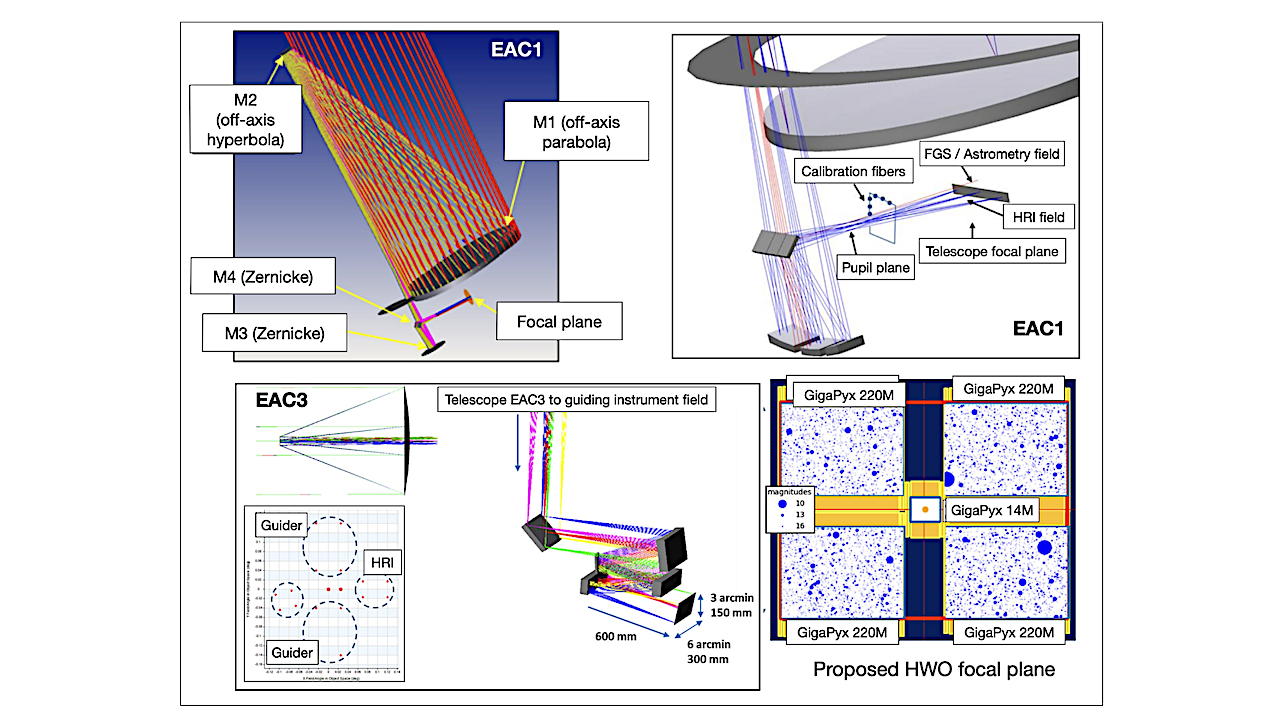Science
NASA’s Habitable Worlds Observatory Set to Revolutionize Astrometry

NASA is advancing astrometry through its new initiative, the **Habitable Worlds Observatory (HWO)**, which aims to enhance our understanding of exoplanets and dark matter. This state-of-the-art observatory, featuring a **6–8 meter large-aperture telescope**, will operate across visible wavelengths and is designed to achieve **sub-microarcsecond accuracy**. Such precision is essential for detecting Earth-like exoplanets in nearby habitable zones and for investigating the effects of dark matter in galactic environments.
The HWO will uniquely combine astrometry and direct imaging to identify rocky exoplanets located within **10 parsecs** of our solar system. The observatory’s dedicated astrometric instrument is capable of producing diffraction-limited images over large fields, achieving a **point-spread function (PSF)** precision of **20 milliarcseconds**. This capability will allow scientists to detect and measure the orbits of Earth-mass planets situated in the habitable zones of stars similar to our Sun.
Technological Innovations in Astrometry
One of the groundbreaking features of the HWO is its **Detector Calibration Unit**, which utilizes interferometric laser fringes to calibrate pixel positions. This innovative system enhances the observatory’s ability to perform high-precision astrometry. By employing differential astrometry and utilizing a stable telescope design, HWO can extend integration times, significantly improving sensitivity to sub-microarcsecond precision. This level of detail is crucial for studying the atmospheres of exoplanets and the behavior of dark matter through stellar motion.
The observatory is expected to significantly refine our understanding of dark matter, particularly concerning the self-interaction cross-section of heavy dark matter particles known as **Weakly Interacting Massive Particles (WIMPs)**. By analyzing stellar motions within galactic environments, the HWO can provide vital data on the masses of ultra-high dark matter particles.
Collaborative Efforts and Future Outlook
The project involves a diverse team of researchers, including prominent figures such as **Fabien Malbet** from the Institute for Planetology and Astrophysics of Grenoble (IPAG) and multiple collaborators from various institutions. Their collective expertise will drive the observatory’s scientific objectives, ensuring that it meets the critical requirements for advancing astrometric measurements.
The vision for the **Habitable Worlds Observatory** aligns with the broader goal of exploring the potential for life beyond Earth while deepening our knowledge of the universe’s structure. As the initiative progresses, it is set to become a cornerstone in the study of both exoplanets and the elusive nature of dark matter.
The HWO’s anticipated launch in **July 2025** marks a significant milestone in astronomical research, promising to transform our understanding of the cosmos. Researchers and astronomers worldwide are keenly awaiting the data that will emerge from this ambitious project, which holds the potential to answer fundamental questions about the universe and our place within it.
-

 Lifestyle3 months ago
Lifestyle3 months agoLibraries Challenge Rising E-Book Costs Amid Growing Demand
-

 Sports3 months ago
Sports3 months agoTyreek Hill Responds to Tua Tagovailoa’s Comments on Team Dynamics
-

 Sports3 months ago
Sports3 months agoLiverpool Secures Agreement to Sign Young Striker Will Wright
-

 Lifestyle3 months ago
Lifestyle3 months agoSave Your Split Tomatoes: Expert Tips for Gardeners
-

 Lifestyle3 months ago
Lifestyle3 months agoPrincess Beatrice’s Daughter Athena Joins Siblings at London Parade
-

 World3 months ago
World3 months agoWinter Storms Lash New South Wales with Snow, Flood Risks
-

 Science3 months ago
Science3 months agoTrump Administration Moves to Repeal Key Climate Regulation
-

 Science2 months ago
Science2 months agoSan Francisco Hosts Unique Contest to Identify “Performative Males”
-

 Business3 months ago
Business3 months agoSoFi Technologies Shares Slip 2% Following Insider Stock Sale
-

 Science3 months ago
Science3 months agoNew Tool Reveals Link Between Horse Coat Condition and Parasites
-

 Sports3 months ago
Sports3 months agoElon Musk Sculpture Travels From Utah to Yosemite National Park
-

 Science3 months ago
Science3 months agoNew Study Confirms Humans Transported Stonehenge Bluestones









